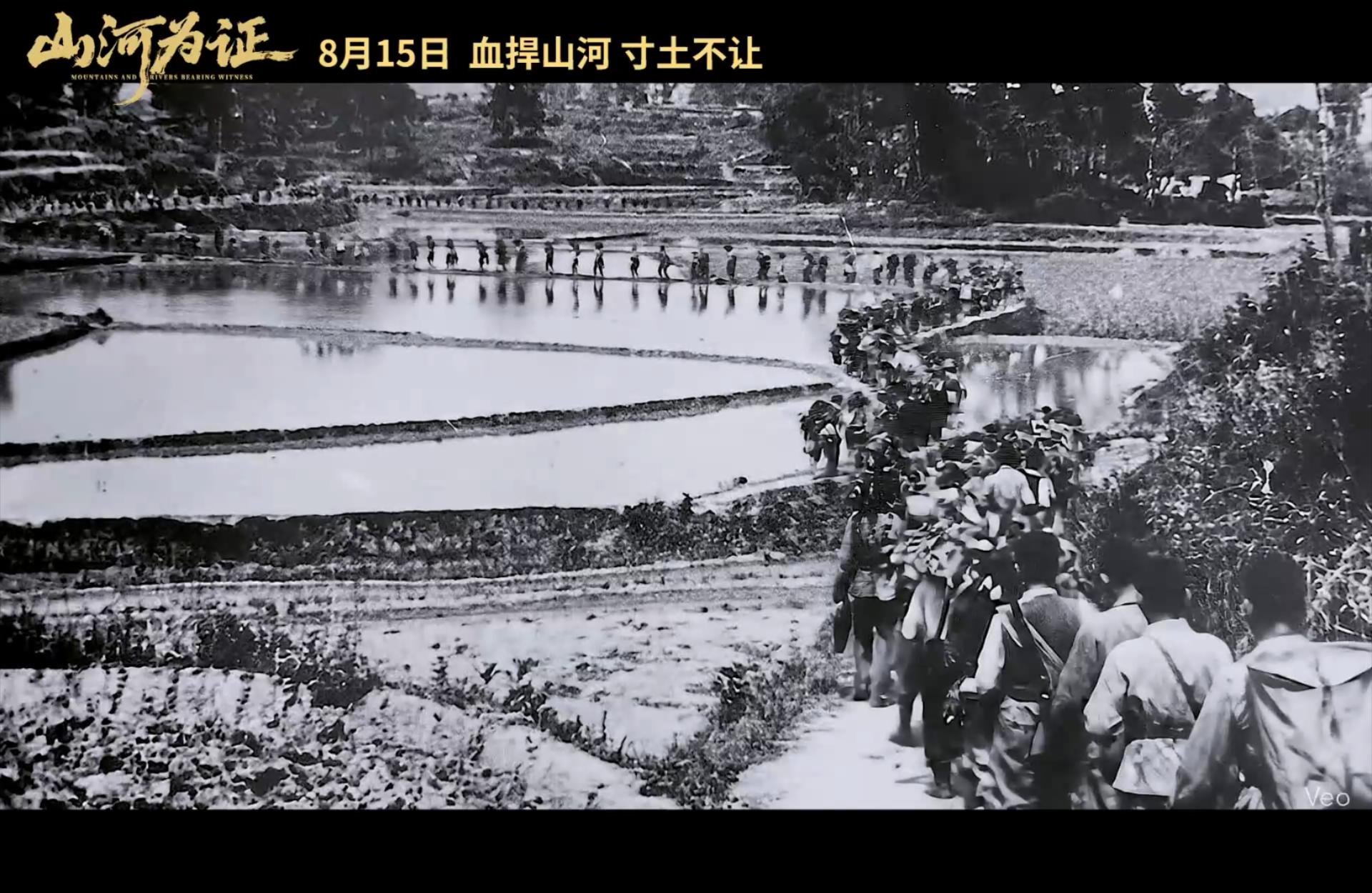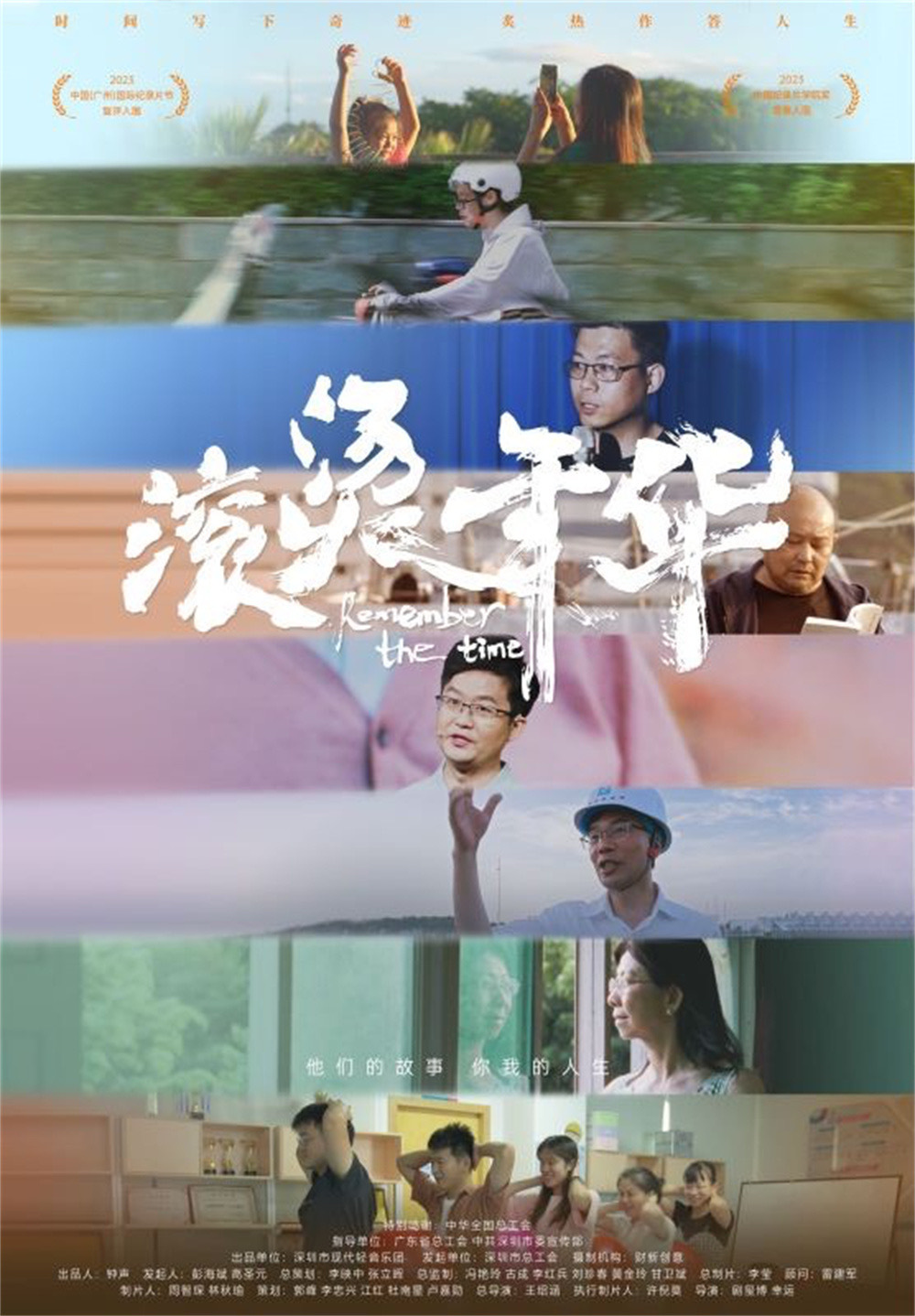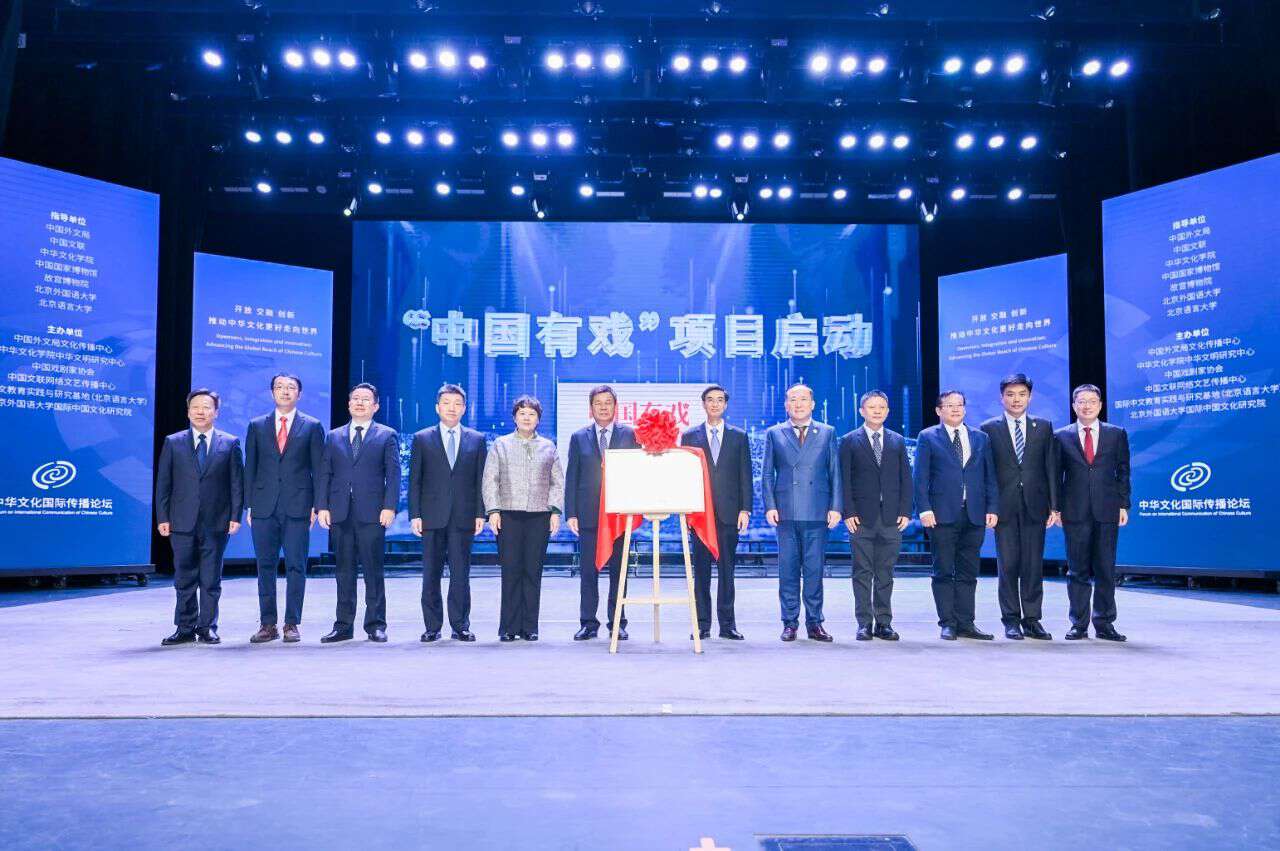
On October 31, the documentary film "White Horse Sisters" held a roadshow in Shanghai. Director Zhang Tongdao interacted with the audience after the screening, sharing the creative process and behind-the-scenes stories of this documentary spanning 24 years. The film focuses on four White Horse Tibetan sisters from Erli Village in Pingwu County, Sichuan Province, documenting their life changes from 1999 to 2023, as well as the village's transformation from traditional farming and hunting to tourism development and post-disaster reconstruction.

Movie poster
"The White Horse Sisters" is not only a visual chronicle documenting the changes of the White Horse Tibetan people, but also a dialogue about time, culture, and life. Through 24 years of tracking and recording, it showcases a people's perseverance and adaptation in the process of modernization, and also allows us to see the vitality of traditional culture in contemporary society. As Zhang Tongdao said, "We are not shouting at them, but having a dialogue."

On-site exchange session
From "accident" to "agreement"
The filming of "White Horse Sisters" began with an "accident". In 1999, Zhang Tongdao was doing research for the CCTV program "Mysteries of Chinese Culture". He came to Erli Village in Pingwu County through an introduction. His original purpose was to explore the flow of Sanxingdui culture, but he accidentally discovered the unique Baima Tibetan group.
The Baima Tibetan people have a long history. According to the "Records of the Grand Historian: Biographies of the Southwestern Barbarians," "From the Ranmang in the northeast, there are dozens of chieftains, with Baima being the largest, all of whom are of the Di ethnic group." This group has a spoken language but no written script, and their culture has been passed down orally and through physical practice. Among them, "Jumping Cao Gai" was listed as a national intangible cultural heritage representative project in 2011, and "Baima Felt Hat Making Technique" was also listed as a provincial intangible cultural heritage.
There are two main explanations for the origin of the name "Baima" (White Horse): one is the place name theory, in Tibetan "Bai" is pronounced "bie" meaning Tibetan, and "Ma" is pronounced "ma" meaning soldier, so together it means "Tibetan soldiers"; the other is the clothing theory, the Baima people wear felt hats with pheasant neck feathers or rooster white tail feathers inserted, which is said to be related to the legend of pheasants alerting the Tibetan soldiers during the Tubo Dynasty and helping them avoid surprise attacks.
The four sisters of the village—Wu Yinzao, Xiao Xiao, Xiao Yingmei, and Jin Yinzao—became the focus of the camera due to their striking appearances and personalities. "When I first went there, I didn't really understand the Baima culture; I was more driven by curiosity," Zhang Tongdao admitted. Early filming focused on rituals and appearances, such as the "Jumping Cao Gai" folk activities on New Year's Eve, even using large lights and crane shots to achieve a grand visual effect. However, due to language barriers and cultural differences, the film still lacks depth.
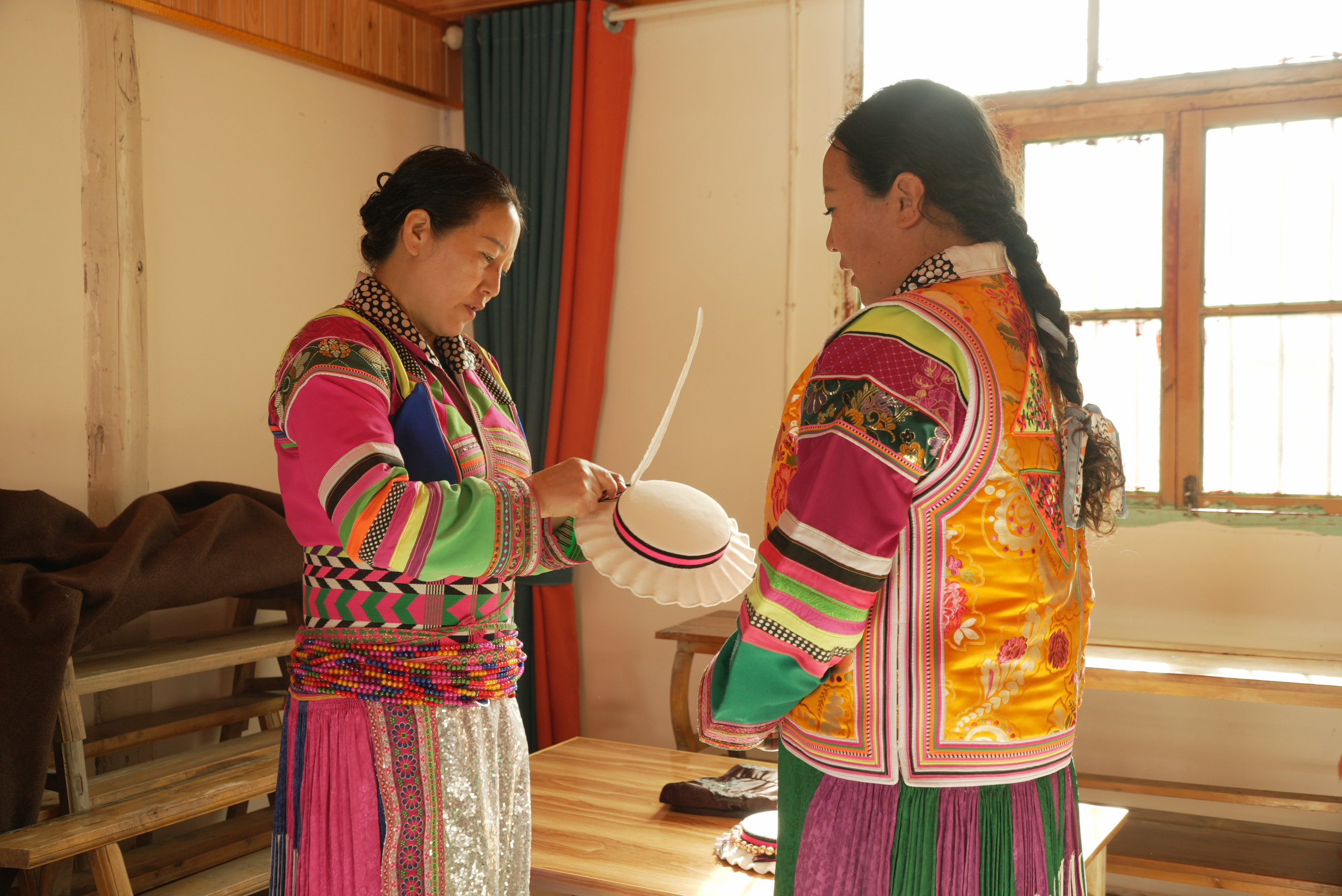
Eldest sister and second sister
In 2003, the first documentary, "The Four Sisters of Baima," was broadcast on CCTV and selected for the Fribourg International Film Festival in Switzerland, bringing the Baima people into the public eye for the first time through film. For the next 18 years, Zhang Tongdao maintained intermittent contact with the village until August 20, 2020, when a phone call from Tian Dongmei, the daughter of the second sister Xiaoxiao, broke the silence: "Uncle, I can't find my mother."
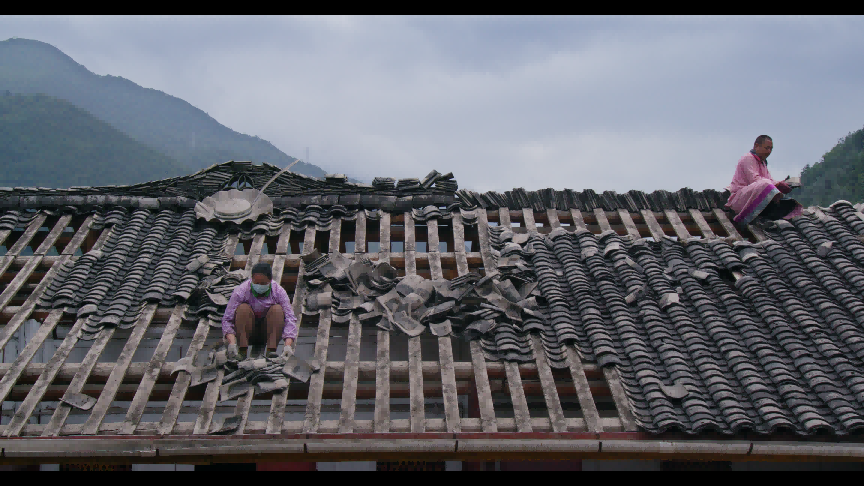
Second Sister on the Roof
A once-in-a-century flash flood destroyed the village, cutting off roads and communications. Zhang Tongdao immediately led a team back to Erli Village, beginning a four-year post-disaster reconstruction effort. This return not only led to the creation of "The White Horse Sisters" but also gave him a deeper understanding of the White Horse culture.
From "recorder" to "family member"
During the conversation, Zhang Tongdao repeatedly emphasized, "The distance between hearts determines the distance between the camera and the subjects." He recalled that when they first started filming in 1999, there was a clear barrier between the camera and the subjects. "When I asked Xiao Yingmei a question, she answered very briefly and her expression was very cold." Even when he left, the four sisters' father—an old man who had served in the military and seen the world—expressed his welcome verbally, but his eyes were full of distrust.
The turning point came the following summer. When Zhang Tongdao returned to the village as promised, the old man held his hand tightly and said, "You kept your word." After that, the film crew moved into the villagers' homes and lived and worked alongside them. The camera gradually got closer to their lives, even filming villagers arguing over the distribution of reconstruction subsidies, "but they didn't care even when the camera was right in their faces."

Villagers lifted the house together
In the aftermath of the 2020 disaster, the film crew followed and documented the entire reconstruction process through the mud: Village Party Secretary Xiao Mu took the lead in repairing roads and building houses, the four sisters continuously returned to their hometown to participate in labor, and the villagers went from observing to working together to rebuild. In 2023, a modern village rose from the ruins, and the Mianyang-Jiuzhaigou Expressway opened to traffic, bringing new development opportunities to Baima Village.
The traditional culture of the Baima Tibetan people, as depicted in the film, is deeply impressive. The Baima people are hailed as "living fossils," and their dances, integrating dance, song, and music, possess both a mysterious religious atmosphere and a strong entertainment element. This ethnic dance serves as their cultural carrier, existing without a written language, and was born alongside the formation of the ethnic group.
The film's footage spans 24 years, with filming taking eight years (1999-2002, 2020-2023), and post-production editing took a year. The team ultimately chose "post-disaster reconstruction" as the main theme for the present, interspersed with scenes from 20 years ago to create a temporal contrast.
For example, when the eldest sister was dismantling the chimney in 2020, the scene cut back to the scene of her installing the chimney in 1999; the third sister was putting on makeup in front of her phone, intertwined with the scene of her drawing her eyebrows with a pencil in 1999; the second sister picked up an advertising board with a photo of herself when she was young in the ruins, with the figure of her carrying a pumpkin walking by in 1999 in the background.
Zhang Tongdao said that this editing method "gives the film depth, making it no longer a flat record, but a presentation of 20 years of changes in fate."
In addition, the team also made a rescue recording of a number of Baima folk songs that were on the verge of being lost. They visited elderly people in their seventies and eighties in the village and restored ancient songs such as "The Sun Song" and "The Soul-Summoning Song".
The opening song of the film, "The Sun Song," is derived from this, with lyrics full of primal vitality, becoming a reflection of the Bai Ma people's philosophy of life: "A person lives a lifetime, singing and dancing a lifetime, only the joy of singing and dancing belongs to us. Life is like a journey, what's the point if you don't sing and dance?"

Grandma puts a flower wreath on her granddaughter
The traditional costumes of the Bai Ma people, as depicted in the film, are also quite distinctive. Women adorn their hair with circular fishbone patterns, serving both aesthetic and warding-off-evil purposes. These cultural details are authentically presented in the film.
From "Spectacle" to "Philosophy of Life"
During the exchange, Zhang Tongdao reflected that in the early filming, he regarded "Jumping Cao Gai" as a spectacle, but he only truly understood its cultural connotations in the second filming.
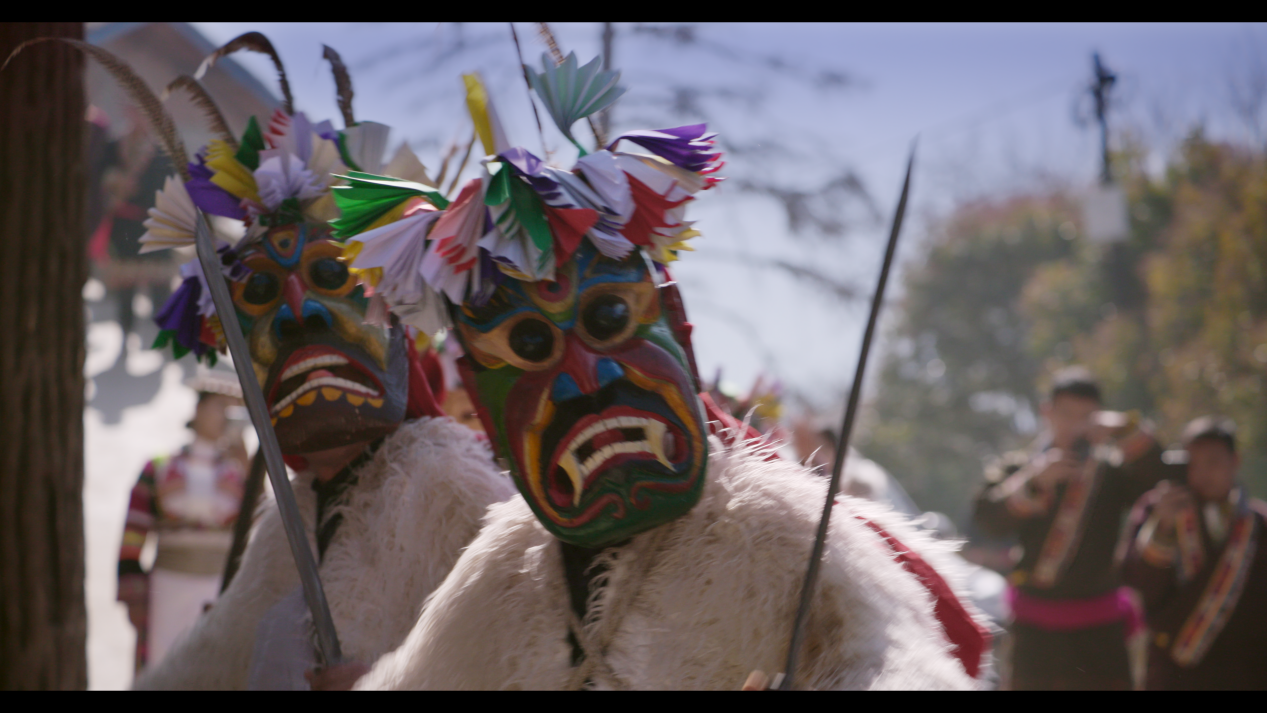
Cao Gai
“Cao Gai is not just a sacrificial ritual, but also a way of life.” He specifically mentioned a slow-motion scene in the film: a toothless old woman, a young woman with a radiant smile, dancing, “everyone seemed to be bathed in divine light.” He explained that “Cao Gai” has three meanings:
Worshiping the gods, praying to the White Horse God for a year of peace; exorcising ghosts, going door to door to drive away evil spirits; revelry, breaking down social hierarchies and achieving emotional release. "In revelry, there is no distinction between rich and poor, male and female, young and old. I can smear ashes on your face, and you can lift me up and throw me on the ground—it is a complete emotional release."
The film also documents another important tradition of the Baima people—the "Round Dance." This is not a performance, but a daily ritual of gathering around a fire after work. The ancient songs are not specimens, but the murmurs of mothers lulling their children to sleep. These intangible cultural heritages are not exhibits in museums, but cultural genes integrated into life and enduring through generations.
At the roadshow, an audience member who had studied the intermarriage patterns of the Baima Tibetans said that the film authentically recreated Baima culture, making him feel a strong connection to it.
Zhang Tongdao responded, "All my films are about engaging in dialogue with the audience. I never try to educate the audience, because the audience is always smarter than me." He emphasized that the bottom line for documentary filmmakers is "the camera doesn't lie," and "White Horse Sisters" is precisely the result of recording real events on the scene.
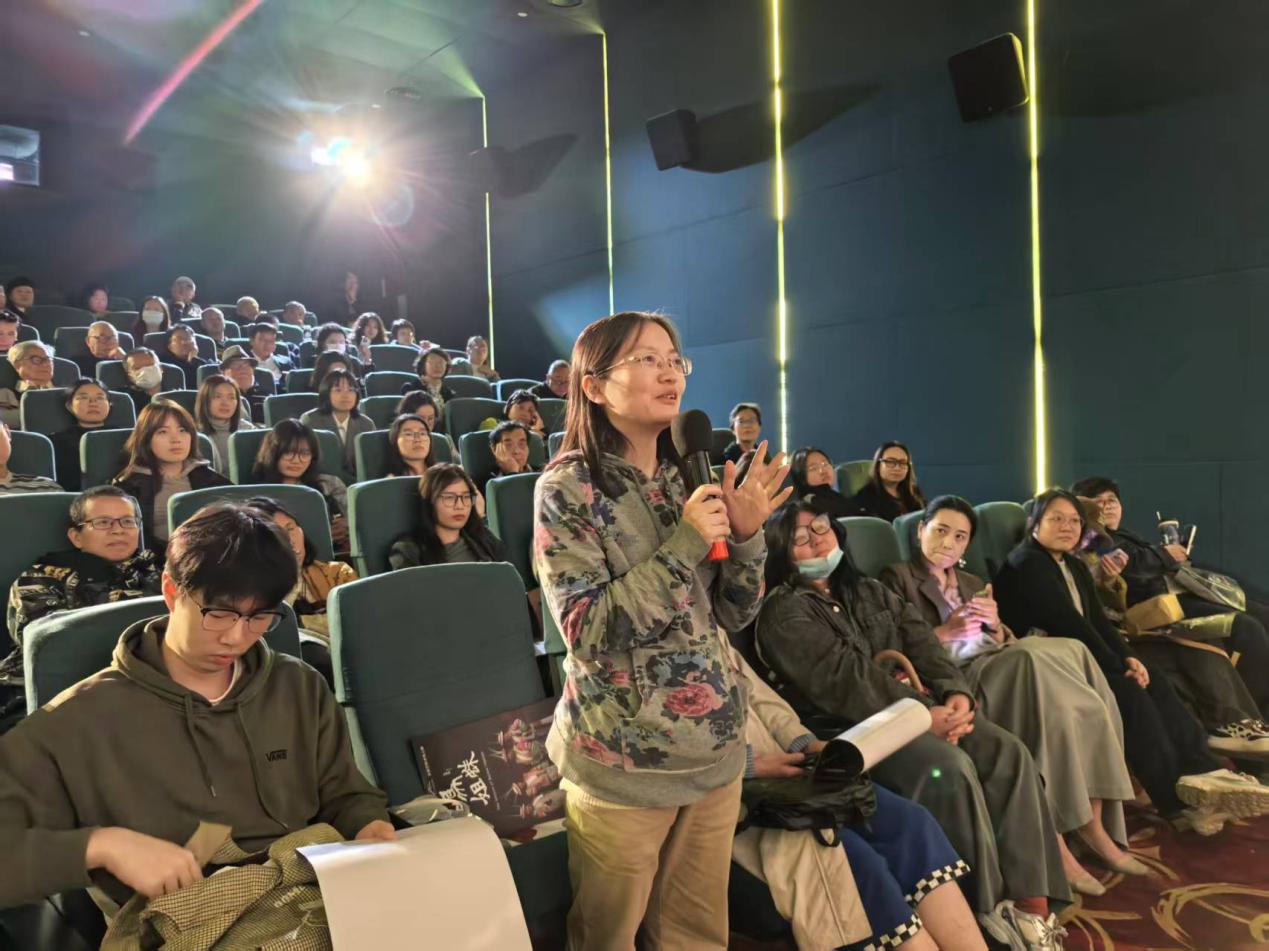
Q&A from the audience
When asked how to get the subjects to behave naturally in front of the camera, Zhang Tongdao shared his experience: "It takes time to go from being unfamiliar with each other to being able to get along well. When I was filming in 1999, there was a clear distance between the camera and the people, but as I got to know them better, the camera got closer and closer to them. When I filmed them arguing, they didn't care even when the camera was right in their faces."
Watching "The White Horse Sisters" is an immersive cultural experience. The film not only records the life trajectories of four sisters from naive girls to mature women, but also witnesses the survival journey of a people. From logging for a living to developing tourism, from traditional mountain villages to modern villages with highways, the film shows not only the changes in material life, but also the perseverance of the spiritual world.
Several scholars participated in the exchange. Shi Chuan, professor at the Shanghai Film Academy of Shanghai University and vice president of the China Film Critics Association, pointed out, drawing on his experience in the reconstruction efforts after the Wenchuan earthquake: "Post-disaster reconstruction is not only about material restoration, but also about the transformation of lifestyles. This process is full of contradictions and challenges."
Other scholars have pointed out that although the film focuses on the Baima Tibetan people, a small minority group, it presents the universality of life—disaster, separation, rebirth, reconstruction, as well as the limitations and brilliance of human nature.
"White Horse Sisters" has been selected as a key documentary project for the 14th Five-Year Plan by the State Administration of Radio and Television and a major cultural support project in Sichuan Province. It has won the Best Documentary Award at the New York International Film Festival. The film will be released on November 5, 2025, through the National Alliance of Arthouse Cinemas.
-
